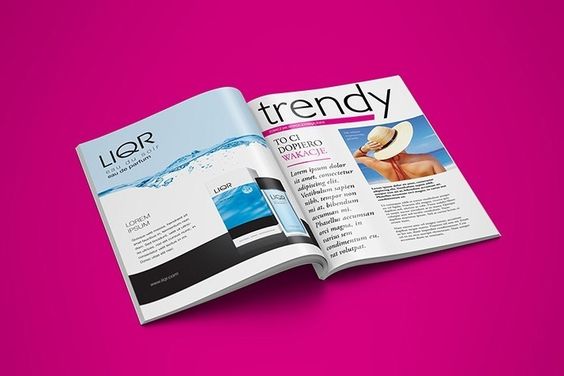Hardcover Vs Softcover Books
When it comes to global publishing giants, Penguin Random House (PRH) and Macmillan Publishers stand at the forefront. Both have built legacies through diverse catalogues, bestselling titles, and loyal readerships. Yet, when it comes to the tangible form of books—hardcover and softcover editions—each takes a distinct approach. Whether you're a casual reader, a collector, or a bookstore buyer, understanding the subtle differences between these two industry titans will guide your preferences and purchases more precisely.
1. Brand Overview: Global Scale vs Literary Precision
Penguin Random House is the world’s largest trade book publisher, the result of a 2013 merger between Penguin Group and Random House. It owns over 300 imprints, including Vintage, Knopf, Viking, and Penguin Classics. PRH’s reach is truly global, producing fiction, non-fiction, children’s literature, and educational content in over 20 countries and countless languages.
In contrast, Macmillan Publishers, while smaller in scope, focuses on literary depth and academic integrity. It owns prestigious imprints like Farrar, Straus and Giroux (FSG), St. Martin’s Press, and Tor Books. Macmillan emphasizes high-quality editorial direction and niche appeal, often championing authors with a distinctive voice and unique literary sensibility.
2. Hardcover Books: Form Meets Prestige
Penguin Random House: Mass-Market Elegance
PRH hardcovers are renowned for their design, build, and accessibility. New releases often debut in hardcover with sturdy binding, crisp pages, and eye-catching dust jackets. Titles like The Midnight Library or A Little Life stand out not just for their content, but their tactile and visual appeal. Collectors appreciate PRH's attention to detail in limited editions and anniversary reprints.
PRH also frequently collaborates with renowned designers and illustrators to elevate covers into art pieces, often aligning design language with current visual culture trends. Their hardcovers are intended to be long-lasting, shareable, and proudly displayed on bookshelves.
Macmillan Publishers: Intimate, Artistic Editions
Macmillan takes a more curated approach to hardcover publishing. FSG’s editions often reflect minimalist design and literary seriousness—suitable for book lovers who value clean layouts, matte finishes, and timeless typography. Tor Books, Macmillan’s sci-fi and fantasy imprint, emphasizes innovative cover art and quality materials, making their hardcovers highly desirable among genre fans.
Unlike PRH’s global, mass-reach model, Macmillan hardcovers often have smaller print runs with greater focus on craftsmanship and first-edition value, appealing to readers who see books as long-term investments.
3. Softcover Books: Practicality and Style
Penguin Random House: Mastering Paperback Versatility
Few publishers dominate the paperback market like PRH. Its Penguin Modern Classics, Vintage International, and Penguin Essentials lines are instantly recognizable in bookstores around the world. Their softcover books are printed with premium covers, high-opacity paper, and strong glued bindings. These books are meant for portability, affordability, and frequent reading.
Additionally, PRH’s approach to paperbacks has evolved with market demands. Many books now feature French flaps, thick matte laminate, or deckled edges—enhancing perceived value without significantly increasing price. This makes them ideal for book clubs, students, travelers, and casual readers alike.
Macmillan Publishers: Academic and Literary Focus
Macmillan’s paperbacks lean heavily into academic and literary territory. Imprints like Picador specialize in reissuing literary fiction and nonfiction with elegant, subdued covers. Meanwhile, Palgrave Macmillan, the company’s academic division, publishes scholarly monographs and textbooks in softcover format—designed for functionality, clarity, and long shelf life.
In many cases, Macmillan uses paperbacks as a second life for successful hardcovers, allowing wider access to critically acclaimed titles while preserving the prestige of their first editions.
4. Visual Identity: Consistency vs Diversity
One of PRH’s strongest assets is its brand consistency. From the iconic orange spines of Penguin Classics to the bold layouts of Vintage Crime, readers and booksellers instantly recognize their lines. This coherence supports strong shelf visibility and consumer trust, especially in markets like the UK, US, and Australia.
By contrast, Macmillan allows each of its imprints to maintain a distinct visual personality. Tor Books leans toward dynamic, fantastical illustrations; FSG favors literary minimalism; Picador is known for clean and intelligent layouts. This flexibility caters to a wide range of reader preferences but may require more brand education in retail environments.
5. Target Audiences: Mass Appeal vs Niche Loyalty
Penguin Random House aims to serve the broadest readership possible. It publishes bestsellers across genres—romance, thriller, memoir, YA, cookbooks—and promotes its authors with major media campaigns. This makes it a favorite among general bookstores, online retailers, and mass-market buyers.
Macmillan, on the other hand, cultivates loyal niche audiences.
Whether it’s sci-fi fans loyal to Tor, academics following Palgrave, or literature lovers drawn to FSG, Macmillan doesn’t chase trends as aggressively. Instead, it builds long-term readership through content integrity and intellectual depth.
6. Production Values and Eco Responsibility
Both publishers have made strides in eco-conscious printing. PRH promotes the use of FSC-certified paper and sustainable ink in most of its hardcover and softcover productions. Macmillan, similarly, adheres to environmental responsibility through localized printing and reduced-carbon shipping logistics.
However, PRH has more resources to invest in global sustainability programs, while Macmillan often partners with smaller, independent printers who use artisanal or low-impact methods—especially for literary editions.
7. Market Reach and Global Distribution
PRH’s supply chain is unparalleled. It ships to more than 100 countries, supports multiple print-on-demand systems, and runs large-scale marketing partnerships with Amazon, Barnes & Noble, and major chain stores worldwide.
Macmillan’s distribution is narrower but more targeted. Its academic works have strong adoption in universities across the US, UK, and Europe, while its trade books gain attention primarily through literary prizes, independent bookstores, and author tours.
8. So, Which One is Right for You?
- If you’re a casual reader looking for stylish, affordable books that follow market trends, Penguin Random House is your go-to.
- If you value literary depth, unique voices, and beautifully crafted editions, Macmillan Publishers is the better fit.
- If you’re a bookstore buyer, understanding these distinctions will help you balance fast-moving stock (PRH) with long-tail literary titles (Macmillan).
- And if you're a collector, you'll likely find treasures from both—limited PRH deluxe editions and rare Macmillan hardcovers each hold their charm.
Conclusion: A World of Books, Two Publishing Philosophies
In the end, Penguin Random House and Macmillan Publishers represent two philosophies in publishing. PRH excels at scaling literature for the masses, while Macmillan thrives in curating meaningful, artistic, and intelligent works. Both contribute enormously to global reading culture, and both offer a rich array of hardcover and softcover formats tailored to very different, yet equally passionate, audiences.
So the next time you're browsing a bookshelf—online or in-store—take a moment to flip to the publisher’s page. It might just tell you more than you think.


